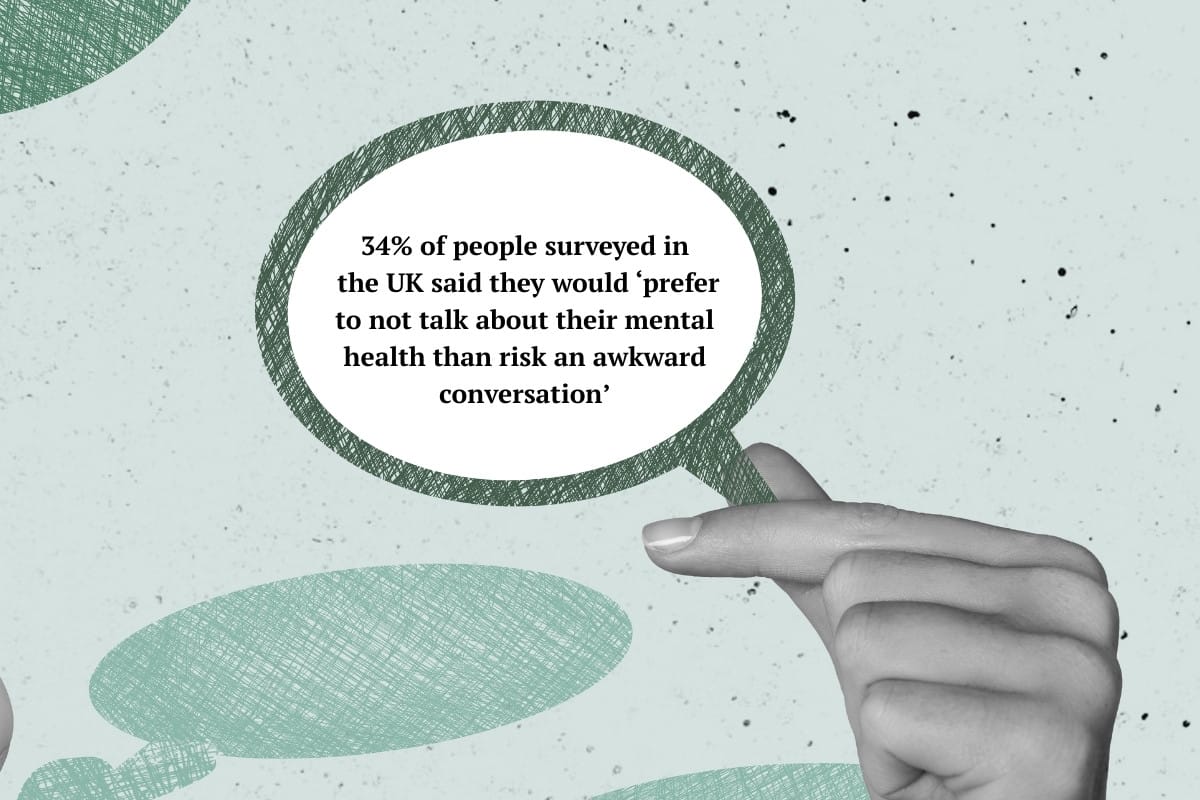How to navigate putting yourself out there, and being vulnerable about your mental health
Opening up to a friend about your mental health is to be encouraged – it takes a lot of bravery to be really honest and to put yourself out there, which is exactly why it can feel daunting. That internal voice might question: ‘What if they see me in a negative light? What if they feel like I’m burdening them? What if it changes the friendship?’
The desire to open up can also feel conflicting. There might be a part of you seeking more honesty within friendships, perhaps a longing to feel more authentic. On the other hand, another part may be caught up in fears about how such openness could land within the relationship.
If you’re feeling a push and pull like this, then you’re not alone. A 2025 Time to Talk study revealed that 34% of people surveyed in the UK said they would “prefer to not talk about their mental health than risk an awkward conversation”. And this is even more prevalent in youngsters, rising to 45% of 16 to 24-year-olds.

Why it’s worth speaking openly
Individuals might feel compelled towards openness for many reasons. Being honest about our mental health problems means more aspects of who we are can be ‘seen’ by our friends, not just the parts that are generally ‘on show’ to the world.
This process of becoming more visible can be liberating – even healing – if we have not been fully seen before. As psychotherapist Caroline Fearns points out, these kinds of conversations can “ease the isolation that so often comes with mental health difficulties”.
Secondly, being more candid about our mental health fosters deeper, more meaningful connections. “Friendships often deepen when we allow ourselves to be vulnerable and authentic,” Caroline explains. “Being open with a friend also gives your friend permission to do the same.”
Open conversations may allow us to ask for what we need within friendships, and open doors for these needs to be met.
Why does opening up make us feel so vulnerable?
According to the 2025 Time to Talk survey, the most common barriers to speaking about mental health were a “fear of burdening others with struggles”, a “fear of being judged or labelled”, and “feeling like no one will truly understand”.
It’s natural to worry how speaking about mental health problems might change the nature of the friendship. For example, if your friendship is built on a shared interest or humour, it might initially feel unusual to stray into conversational territory that’s more personal or sensitive.
“It’s completely normal to feel nervous about opening up to a friend about your mental health,” Caroline says. “Something I see often with my clients is the fear around how it will be received – many worry about being a burden, or making their friend feel uncomfortable.”
For dealing with this fear, Caroline recommends flipping the perspective. “How would you feel if your friend opened up to you? Most people would want a friend to feel able to talk, and would be honoured that they trusted them,” she adds.
Choosing who to trust
Caroline advises choosing someone you feel emotionally safe with. Sometimes we know instinctively who to trust with the more complex or painful parts of our life. But, if it’s less clear, then you may want to reflect on questions such as:
- Who in my life is non-judgemental of others?
- Who listens attentively, without jumping to conclusions?
- Who seems open to different perspectives?
How a friend speaks about others, or sensitive topics, can help you sense how they might respond. Are they critical and closed-minded, or warm, respectful of difference, and keen to learn?
The mode of conversation
Before easing into a conversation, think about which mode of communication would feel most empowering, as each has a different ‘vibe’.
If you would find comfort in seeing a friend’s face and body language, and you prefer spontaneous responses, then face-to-face might suit you best – either in person or via video call.
Alternatively, if you prefer asynchronous communication, more processing time between responses, and writing ‘flows’ more than speaking for you, then messaging might make you feel more comfortable. Digital and/or asynchronous communications are just as valid as in person or face-to-face ways of expressing yourself, so don’t let anyone shame you for your communication preferences.

No matter how you communicate, it’s essential to choose a time when nobody feels rushed, and a location where you won’t be interrupted.
Use of metacommunication
Metacommunication – communicating about how you’re communicating – can provide an additional layer of emotional safety. “I might find this hard to talk about, but I would like to try” or “Can I tell you about how I’ve been feeling lately?” are both examples of metacommunication.
You may want to use meta-communication to start (or finish) a conversation, check a friend’s current capacity for a chat, share how vulnerable talking makes you feel, and ask for what you need most. For example:
-
I’ve had a few things on my mind that I would love to chat with you about.
-
Would you be open to talking about [insert topic] with me?
-
This conversation has been intense for me; could we pause and continue another day?
-
I’ve never spoken about this before with a friend.
-
This is new for me. I might need some extra time to find the right words.
-
I’m grateful for the chance to speak about this without judgement.
Given how nuanced mental health problems are, finding the words that ‘fit’ your lived experiences can be complex. Acknowledge that to yourself, as well to others.
As Caroline notes, sharing “parts of yourself that feel vulnerable takes courage. Go at your own pace, share when you feel ready, and only as much as feels right for you.” Think of talking about mental health like peeling layers of an onion, rather than ripping off a plaster. The right person will be there for another conversation.

Practise self-compassion
Sometimes a conversation might not go to plan – perhaps you didn’t get the response you were hoping for, or weren’t able to fully express what you wanted to say. Understandably, this can lead to heightened feelings of disconnection, embarrassment, or even shame.
Try to be gentle with yourself, if any of these uncomfortable feelings arise. “If a friend responds awkwardly or is dismissive, this usually reflects their own discomfort or limitations,” Caroline notes. “Their response doesn’t mean you did anything wrong.”
Trusting what Caroline refers to as the “pull to talk” is a valuable act. “It’s a statement that you’re not going to hide or carry shame for struggling. If one friend can’t meet you in that place, don’t give up,” Caroline says. The people who are willing to listen and support you are out there – even if they take a bit of time to find.


Comments